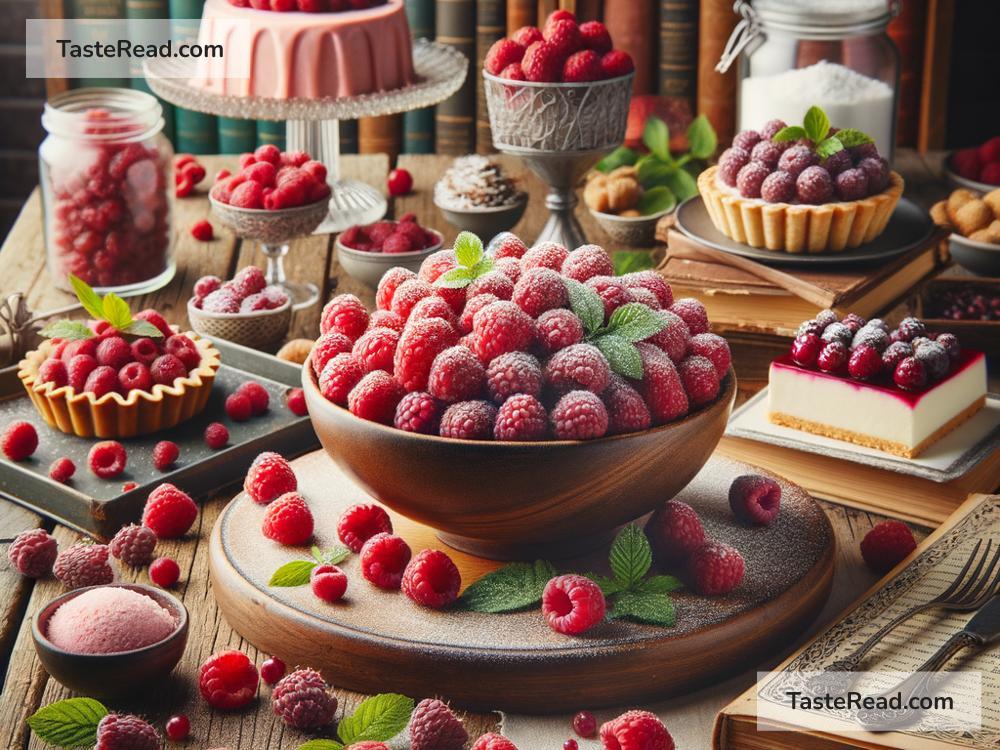How Raspberries Became a Dessert Favorite
Raspberries are small, juicy fruits that burst with flavor, making them a popular choice for desserts around the world. Their bright color, sweet-tart taste, and ability to blend with many ingredients have made raspberries a timeless favorite in cakes, pies, ice creams, and more. But how did this humble berry go from growing wild in forests to becoming the star ingredient in so many desserts? Let’s explore the story behind raspberries’ rise to dessert fame!
A Berry with Ancient Roots
Raspberries have been around for thousands of years. They are believed to have originated in Eastern Europe and Asia, where they grew wild in forests and hills. Ancient Greeks and Romans were among the first to recognize their value—not just for eating but also for medicinal purposes. Raspberry leaves were used to treat ailments, while the berries themselves were enjoyed as a rare treat by those who could find them.
In the Middle Ages, raspberries became more widely cultivated across Europe. They were primarily grown in monastery gardens, where monks used them to make jams, medicinal syrups, and wines. By the 15th century, raspberries were seen as a delicacy in royal courts and among wealthy families. Their sweetness and vibrant red color made them a prized food fit for celebrations and feasts.
Crossing Borders: Raspberries in America
Raspberries eventually made their way to the Americas as European settlers brought seeds and plants with them during colonization. In the 1700s and 1800s, raspberries began to grow widely in the United States, particularly in cooler climates where the berry thrived. Farmers started cultivating them in larger quantities, making raspberries more accessible to everyday people—not just royalty.
Raspberries’ excellent flavor and versatility helped them take off in the kitchen. Since the berries were easy to preserve by turning them into jams or jellies, they became a staple ingredient in homes across America and Europe. Families used them to make fruit tarts and cobblers, beginning their transformation into a dessert superstar.
Sweet Innovations: Raspberries Join Modern Desserts
By the late 19th and early 20th centuries, raspberries were firmly established as a go-to fruit for baking and sweet treats. The availability of sugar and other baking ingredients grew, making it easier for people to experiment with raspberries in desserts. Recipes for raspberry pies, jams, and puddings started appearing in cookbooks, inspiring home cooks everywhere.
One of the game changers for raspberries in desserts was their pairing with cream and chocolate. These combinations elevated raspberries further, enhancing their flavor and creating indulgent desserts. The tangy nature of raspberries contrasted beautifully with the richness of cream or the deep sweetness of chocolate.
Raspberry cheesecake is one famous example of this pairing. Smooth cream cheese blended with a raspberry swirl creates a dessert that is both creamy and fruity, winning hearts around the world. Similarly, raspberry-filled chocolates and truffles became popular, with their gooey center bursting with fruity goodness.
The Rise of Commercial Desserts
By the 20th century, raspberries also found their way into commercial desserts. As ice cream parlors gained popularity, raspberry became a favorite flavor. The introduction of frozen raspberry desserts, such as sorbets and raspberry ripple ice cream, allowed people to enjoy the refreshing taste of raspberries during hot summer days.
Bakeries and restaurants began using raspberries in elegant desserts like soufflés, mousses, and layered cakes. These visually stunning creations showcased the deep red color of raspberries, making them a feast for the eyes as well as the palate. Raspberries became synonymous with luxury, used in desserts for weddings, banquets, and other special occasions.
Health and Freshness: Another Reason for Popularity
As people became more health-conscious, raspberries gained even more attention for their nutritional benefits. They are packed with vitamins, antioxidants, and fiber, making them a guilt-free addition to desserts. Unlike sugary frosting or heavy cream, raspberries offer a natural sweetness and brightness that balance rich flavors. Their health appeal has helped them transition into modern desserts like smoothies, yogurt parfaits, and fruit salads.
In recent years, the growth of fresh raspberry markets has also contributed to their popularity. Farmers’ markets and grocery stores stock fresh raspberries all year long, making them easy to access for home cooks and professional bakers alike. This availability has inspired countless recipes, from classic raspberry shortcakes to trendy desserts like raspberry macarons and no-bake raspberry cheesecakes.
A Timeless Favorite
Raspberries continue to be a favorite dessert ingredient because they are so versatile. They can star as the main ingredient or quietly enhance other flavors. Whether in a rustic pie or an elegant mousse, raspberries add a burst of color and flavor that’s hard to beat.
Their journey from wild forest berries to dessert royalty is a testament to their universal appeal. People love raspberries not just for their taste but also for the memories they create—childhood picnics, family dinners, and fancy celebrations.
So next time you enjoy a scoop of raspberry ice cream or a slice of raspberry tart, take a moment to appreciate this little fruit’s rich history and its remarkable rise to dessert fame. Raspberries have truly earned their place as one of the most beloved berries in the world.


